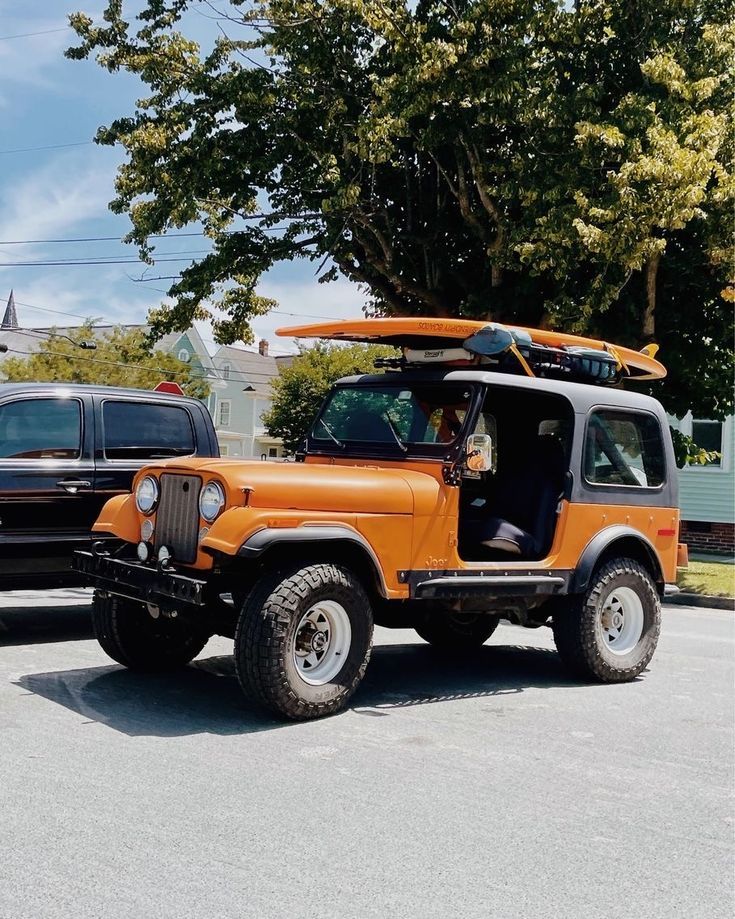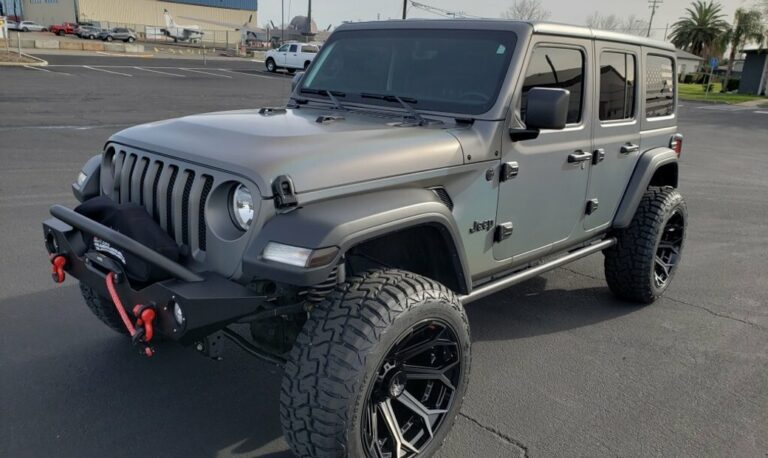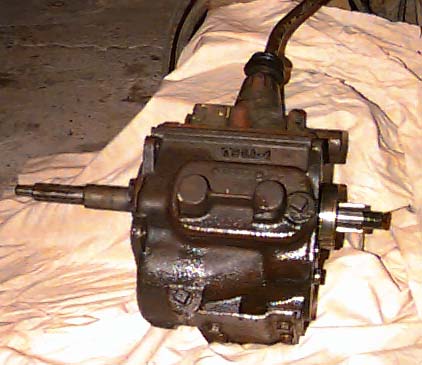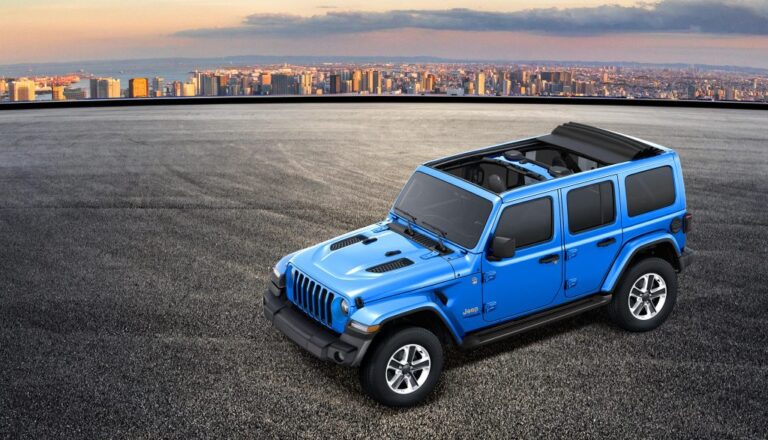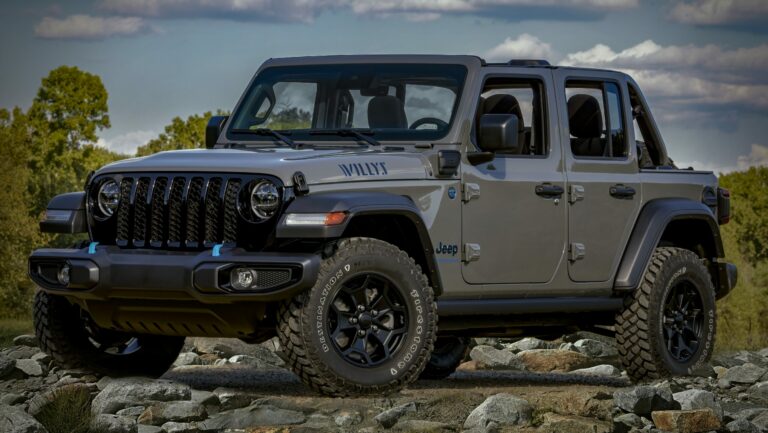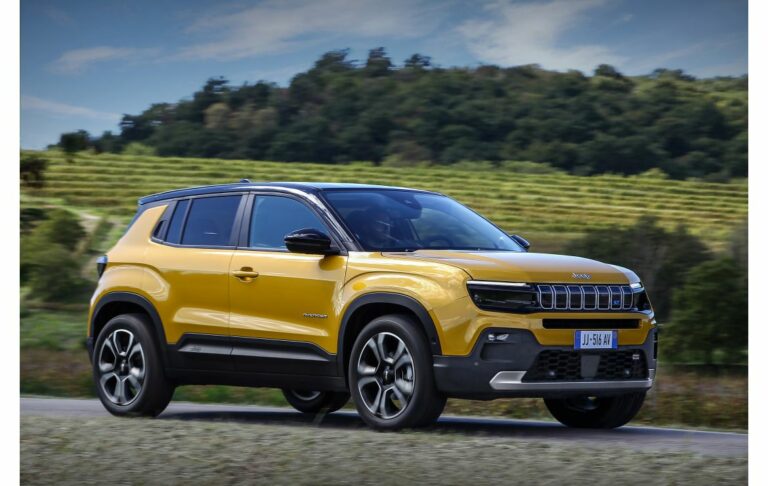1983 Jeep Wagoneer For Sale: A Comprehensive Buyer’s Guide to an Enduring Icon
1983 Jeep Wagoneer For Sale: A Comprehensive Buyer’s Guide to an Enduring Icon jeeps.truckstrend.com
An Enduring Legacy: The Allure of the 1983 Jeep Wagoneer
In an era dominated by sleek, modern crossovers, the 1983 Jeep Wagoneer stands as a majestic testament to a bygone era of American automotive excellence. More than just a vehicle, it’s a cultural icon, a pioneer that blended the rugged utility of a Jeep with the creature comforts and style of a family sedan, effectively inventing the luxury SUV segment long before the term existed. For many, the sight of its distinctive woodgrain paneling and boxy silhouette evokes nostalgia for simpler times, adventurous road trips, and a sense of timeless Americana.
1983 Jeep Wagoneer For Sale: A Comprehensive Buyer’s Guide to an Enduring Icon
The 1983 Wagoneer, specifically, represents a sweet spot in its long production run (1963-1991), embodying the mature design and features that would soon lead to its "Grand Wagoneer" branding, while still retaining the foundational robustness of the original SJ platform. Its importance in automotive history is undeniable, paving the way for the ubiquitous SUVs we see today. For collectors, enthusiasts, or anyone seeking a unique classic that offers both character and capability, finding a 1983 Jeep Wagoneer for sale is an exciting prospect. This comprehensive guide will navigate you through everything you need to know about acquiring, evaluating, and owning this remarkable piece of automotive history.
Why the 1983 Jeep Wagoneer Remains a Coveted Classic
The enduring appeal of the 1983 Jeep Wagoneer is rooted in a unique combination of factors that set it apart from many other vintage vehicles.
Key Information & Benefits:
- Timeless Design: The iconic "woodgrain" side paneling (a vinyl appliqué, not real wood, but instantly recognizable) combined with its upright, purposeful stance gives the Wagoneer an unmistakable and highly coveted aesthetic. It exudes a rustic elegance that few modern vehicles can replicate.
- Robust Construction: Built on a sturdy body-on-frame chassis, the Wagoneer was designed to handle both rugged terrain and daily suburban duties. Its AMC 360 cubic-inch V8 engine, paired with a reliable automatic transmission (TorqueFlite 727), offers ample torque and a sense of bulletproof reliability when properly maintained.
- Pioneer of Luxury SUVs: Long before the Cadillac Escalade or Range Rover became commonplace, the Wagoneer offered features like power windows, air conditioning, power steering, cruise control, and plush interiors (often velour or leather) that were uncommon in 4×4 vehicles of its time. This blend of utility and luxury was revolutionary.
- Strong Community Support: A vibrant and passionate community of Wagoneer owners and enthusiasts exists, offering a wealth of knowledge, advice, and a network for sourcing parts and services. This support system is invaluable for new owners.
- Investment Potential: Well-maintained or professionally restored 1983 Wagoneers have seen a steady appreciation in value over the past decade, making them not just a vehicle, but a tangible asset that can grow in worth.

Unique Selling Points:
Beyond its general appeal, the 1983 model year specifically highlights the Wagoneer’s transition towards its peak luxury iteration. While not yet officially branded "Grand Wagoneer" across all trims, the luxury "Wagoneer Limited" (often referred to simply as "Wagoneer" in ’83, but carrying the Grand Wagoneer’s spirit) was the top-tier offering, boasting most of the features that would define the later Grand Wagoneer. Its classic appeal lies in its authenticity and the nostalgic connection it offers to a golden age of American motoring.

Understanding the 1983 Wagoneer: Specifications and Variants
To effectively search for a 1983 Jeep Wagoneer for sale, it’s crucial to understand its mechanical and trim specifications.
Engine & Drivetrain:
- Engine: The primary engine for the 1983 Wagoneer was the robust AMC 360 cubic-inch (5.9L) V8. This carbureted engine produced around 140-160 horsepower (net) and substantial torque, making it well-suited for its size and intended use. A less common, but available, engine was the AMC 258 cubic-inch (4.2L) inline-six, typically found in more basic Wagoneer models, which are rarer in the luxury trims.
- Transmission: Almost all 1983 Wagoneers came with a Chrysler TorqueFlite 727 3-speed automatic transmission, known for its durability.
- Drivetrain: The 1983 Wagoneer featured Jeep’s Selec-Trac four-wheel-drive system, which offered both part-time and full-time 4WD capabilities. This provided flexibility for various driving conditions, from highway cruising to off-road adventures.

Trim Levels and Features:
While the "Grand Wagoneer" badging would become standard in 1984, the 1983 luxury Wagoneer (often marketed as the "Wagoneer Limited" or simply the top-tier "Wagoneer") offered nearly all the signature features:
- Exterior: The famous woodgrain vinyl trim, chrome bumpers, roof rack, and distinctive alloy wheels.
- Interior: Plush velour or genuine leather seating, power-operated windows and door locks, air conditioning, tilt steering wheel, AM/FM stereo (often with cassette), and comprehensive instrumentation.
- Comfort & Convenience: Power steering, power brakes (front disc, rear drum), and cruise control were standard or common options, contributing to a surprisingly comfortable ride for a vehicle of its vintage.
Important Considerations:
- Originality vs. Modification: Decide if you want a purely original, numbers-matching vehicle for purist appeal, or if you’re open to a Wagoneer with modern upgrades (e.g., fuel injection conversion, upgraded suspension/brakes) for improved drivability.
- Common Issues: Be aware of typical Wagoneer weak points: rust (especially rocker panels, rear quarter panels, tailgate, and floorboards), electrical gremlins (power windows, gauges, HVAC), carburetor issues leading to poor fuel economy or rough idling, and worn suspension components.
The Hunt for Your 1983 Jeep Wagoneer: Where to Look and What to Expect
Finding the right 1983 Jeep Wagoneer for sale requires patience, research, and knowing where to focus your search.
Where to Look:
- Online Auction Sites:
- Bring a Trailer (BaT): Often features high-quality, well-documented Wagoneers, frequently with detailed photo galleries and robust bidding. Expect higher prices for top-tier examples.
- eBay Motors: A wide range of conditions and prices, from project cars to fully restored models. Be cautious and verify seller credibility.
- Hemmings: A classic car marketplace with both dealer and private listings, often with more detailed descriptions.
- Specialized Dealers: Several dealerships specialize in vintage SUVs and specifically the Jeep Wagoneer/Grand Wagoneer. These dealers often provide reconditioned vehicles, warranties, and specialized knowledge, but at a premium price. Examples include Wagonmaster or similar regional specialists.
- Classic Car Marketplaces: Sites like ClassicCars.com, AutoTrader Classics, and others aggregate listings from various sources.
- Enthusiast Forums & Social Media Groups: Dedicated Facebook groups ("Jeep Grand Wagoneer Owners Group"), online forums (e.g., IFSJA.org for full-size Jeeps), and enthusiast clubs can be excellent sources for private sales, often from knowledgeable owners.
- Local Classifieds & Word of Mouth: Don’t underestimate the power of local searches or letting friends and mechanics know you’re looking. Hidden gems can sometimes be found this way.
Tips for Finding a Good One:
- Define Your Budget and Needs: Are you looking for a show car, a reliable driver, or a restoration project? Your budget will dictate what’s feasible.
- Patience is Key: The best Wagoneers don’t come up for sale every day. Be prepared to wait for the right vehicle.
- Location, Location, Location: Wagoneers from dry climates (Southwest, California) tend to have significantly less rust than those from the Rust Belt or coastal areas.
- Pre-Purchase Inspection (PPI): Crucial. No matter how good a vehicle looks in photos, arrange for a qualified mechanic familiar with vintage Jeeps (or at least carbureted V8s) to perform a thorough inspection. This can save you thousands in unexpected repairs.
Types/Categories of Wagoneers for Sale:
- Project Car: Lowest price range, requires significant mechanical and/or cosmetic work. Ideal for DIY enthusiasts with time and skills.
- Driver Quality: Functional and roadworthy, but may have minor cosmetic flaws, some deferred maintenance, or non-working accessories. Good for those who want to enjoy the car immediately and fix things over time.
- Good Condition: Well-maintained, mostly original, with minimal rust and all major systems working. May have minor imperfections consistent with age.
- Excellent/Restored: Highest price range, either meticulously preserved original examples or professionally restored to near-new condition. Often comes with detailed documentation of work performed.
Critical Inspection and Evaluation: Before You Buy
A thorough inspection is paramount when considering a 1983 Jeep Wagoneer for sale. Don’t let nostalgia blind you to potential issues.
Key Areas to Inspect:
- Rust: This is the Wagoneer’s Achilles’ heel.
- Body Panels: Check rocker panels, lower rear quarter panels, wheel wells, bottom of doors, and around the tailgate window.
- Frame: Inspect the frame rails, especially near suspension mounting points and where body mounts attach.
- Floorboards: Lift floor mats and check for soft spots or patched areas.
- Roof/Drip Rails: Look for bubbling paint or rust in the gutters.
- Engine and Drivetrain:
- Leaks: Look for oil, transmission fluid, or coolant leaks under the vehicle and around components.
- Starting & Idling: Does it start easily? Is the idle smooth or rough? Listen for unusual noises (knocks, taps).
- Carburetor: Check for proper operation, signs of rebuild, or vacuum leaks.
- Transmission: Check fluid level and condition. During a test drive, ensure smooth shifts without slipping or harshness. Test 4×4 engagement (high and low range).
- Electrical System:
- Power Windows: A common failure point. Test all windows for smooth operation up and down.
- HVAC: Test AC (does it blow cold?) and heater.
- Gauges & Lights: Ensure all dashboard gauges (oil pressure, temperature, fuel, voltage) work accurately. Check all exterior and interior lights.
- Wipers/Radio: Test all accessories.
- Interior Condition:
- Seats: Check for rips, tears, excessive wear, or collapsed foam. Original leather or velour in good condition is a huge plus.
- Headliner: Sagging or damaged headliners are common and costly to replace.
- Dashboard: Look for cracks or sun damage.
- Woodgrain Trim: Ensure interior woodgrain accents are intact and not peeling.
- Suspension and Steering:
- Shocks/Springs: Check for leaks on shocks, and ensure springs aren’t sagging excessively.
- Bushings: Worn suspension bushings can lead to clunks and poor handling.
- Steering: Look for excessive play in the steering wheel, which could indicate worn steering box or linkage components.
- Brakes: Test pedal feel and stopping power. Listen for grinding or squealing.
Practical Advice:
- Bring a Magnet: Use a small magnet to detect body filler over rust.
- Check Documentation: Ask for service records, receipts for recent work, and ownership history. This provides insight into how well the vehicle has been maintained.
- Test Drive: A thorough test drive is non-negotiable. Pay attention to how the engine performs under load, transmission shifts, steering response, and any unusual noises. Drive it at various speeds and on different road surfaces.
Owning a 1983 Jeep Wagoneer: Maintenance, Upgrades, and Community
Owning a 1983 Wagoneer is a rewarding experience, but it comes with its own set of considerations.
Potential Challenges and Solutions:
- Fuel Economy: The AMC 360 V8 is notoriously thirsty, typically delivering 8-12 MPG.
- Solution: Proper carburetor tuning, ensuring the engine is in optimal condition. For those seeking better efficiency, an aftermarket electronic fuel injection (EFI) conversion is a popular, albeit expensive, upgrade.
- Reliability of Old Systems: Electrical components, vacuum lines, and carbureted systems can be temperamental.
- Solution: Proactive maintenance, replacing worn components before they fail, and learning basic diagnostics. Many owners view this as part of the classic car experience.
- Parts Availability: While mechanical parts are generally good, specific trim pieces, interior components, or unique body panels can be scarce.
- Solution: Rely on specialized vendors (e.g., BJ’s Off-Road, Team Grand Wagoneer), junkyards, and the robust online community for sourcing parts. Many common wear items are still produced.
- Rust Mitigation: If you purchase a Wagoneer with existing rust, addressing it promptly is crucial to prevent further deterioration.
- Solution: Professional rust repair, undercoating, and diligent cleaning, especially after driving in salt or harsh conditions.
Tips for Ownership:
- Join the Community: Connect with other Wagoneer owners through forums and social media. Their collective knowledge is an invaluable resource.
- Learn Basic DIY: Understanding how to perform basic maintenance (oil changes, tune-ups, addressing minor electrical issues) will save you money and deepen your appreciation for the vehicle.
- Budget for Maintenance: Like any classic car, a Wagoneer will require ongoing maintenance and occasional repairs. Factor this into your ownership costs.
- Consider Upgrades: Popular upgrades include modern sound systems, LED lighting, improved braking systems, aftermarket suspension lifts, and the aforementioned EFI conversion for better performance and reliability.
Price Table: 1983 Jeep Wagoneer For Sale
The price of a 1983 Jeep Wagoneer can vary significantly based on condition, mileage, originality, maintenance history, and geographic location. This table provides a general guideline.
| Condition Category | Price Range (USD) | Description | Key Factors Influencing Price |
|---|---|---|---|
| Project Car | $5,000 – $12,000 | Requires significant mechanical, body, or interior work. May be non-running. | Extent of rust, engine condition, completeness, rarity of components. |
| Driver Quality | $12,000 – $25,000 | Functional and roadworthy, but has cosmetic flaws (dents, faded paint, interior wear) and may need minor repairs/deferred maintenance. | Running condition, minimal rust, working major systems, potential for quick improvements. |
| Good Condition | $25,000 – $40,000 | Well-maintained, mostly original. Minor imperfections consistent with age. All major systems working. Some service records. | Low mileage for age, strong mechanicals, clean title, good exterior/interior, limited rust. |
| Excellent / Restored | $40,000 – $70,000+ | Immaculate, either meticulously preserved original or professionally restored to near-new condition. All systems function perfectly. Extensive documentation. | Show-quality paint/interior, rust-free, documented restoration/maintenance, low original mileage (for preserved). |
Note: These are estimated ranges and actual prices can fluctuate based on market demand, specific features, and seller motivation. Always factor in the cost of a pre-purchase inspection and potential immediate repairs.
Frequently Asked Questions (FAQ) about the 1983 Jeep Wagoneer
Q1: Is the 1983 Wagoneer a "Grand Wagoneer"?
A1: While the "Grand Wagoneer" badging became standard in 1984, the top-tier 1983 Wagoneer (often referred to as the "Wagoneer Limited" or simply the most luxurious "Wagoneer" trim) offered almost all the features and luxury appointments that would define the later Grand Wagoneer. So, in essence, it’s functionally very similar to what would soon be called a Grand Wagoneer.
Q2: How reliable is a 1983 Jeep Wagoneer?
A2: Like any 40-year-old vehicle, reliability depends heavily on past maintenance. The AMC 360 V8 and TorqueFlite 727 transmission are generally robust, but electrical components, vacuum lines, and original carburetors can be sources of issues. With proper, proactive maintenance and addressing common weak points, they can be surprisingly reliable, but expect more upkeep than a modern vehicle.
Q3: Are parts readily available for the 1983 Wagoneer?
A3: For mechanical components (engine, transmission, suspension), parts availability is generally good, thanks to the long production run and shared AMC/Chrysler parts bins. However, specific trim pieces, unique interior components, and rust-free body panels can be challenging to find and may require sourcing from specialized vendors or donor vehicles.
Q4: What kind of fuel economy can I expect?
A4: Don’t expect much. The 1983 Wagoneer, with its carbureted AMC 360 V8, typically gets between 8 and 12 miles per gallon (MPG), depending on driving conditions and engine tune. Some owners perform EFI conversions to slightly improve efficiency and drivability.
Q5: Can a 1983 Wagoneer be a daily driver?
A5: It can be, but it requires commitment. A well-sorted Wagoneer can handle daily driving, but it won’t offer the comfort, safety features, or fuel economy of a modern SUV. Many owners prefer to use them as weekend cruisers or secondary vehicles. Regular maintenance is crucial for daily driving reliability.
Q6: Is a 1983 Wagoneer a good investment?
A6: Historically, well-maintained and restored Wagoneers have seen significant appreciation in value, making them a good "fun investment." However, like any classic car, their value is subject to market trends. Buying a project car for cheap and restoring it can be costly, often exceeding its market value. The best "investments" are usually those already in excellent condition.
Q7: What are the biggest issues to look out for when buying?
A7: Rust (especially in rocker panels, rear quarters, and tailgate), electrical problems (power windows, gauges), carburetor issues, and deferred maintenance are the most common and costly problems. Always get a pre-purchase inspection.
Conclusion: Embracing the Wagoneer Lifestyle
The 1983 Jeep Wagoneer for sale isn’t just an old SUV; it’s a piece of automotive history, a statement of style, and a ticket to a unique ownership experience. Its blend of classic charm, rugged capability, and surprising luxury has cemented its place as a beloved icon. While acquiring and maintaining one requires diligence and a realistic understanding of vintage vehicle ownership, the rewards are immense.
From the admiring glances it draws to the robust thrum of its V8 engine, driving a 1983 Wagoneer is an immersive experience that connects you to an era of unpretentious adventure and enduring quality. For those willing to embrace its quirks and commit to its care, the 1983 Jeep Wagoneer offers not just transportation, but a lifestyle, a conversation starter, and a tangible piece of Americana that continues to captivate hearts. Your journey to owning this legendary vehicle begins with informed choices and a passion for the road less traveled.
